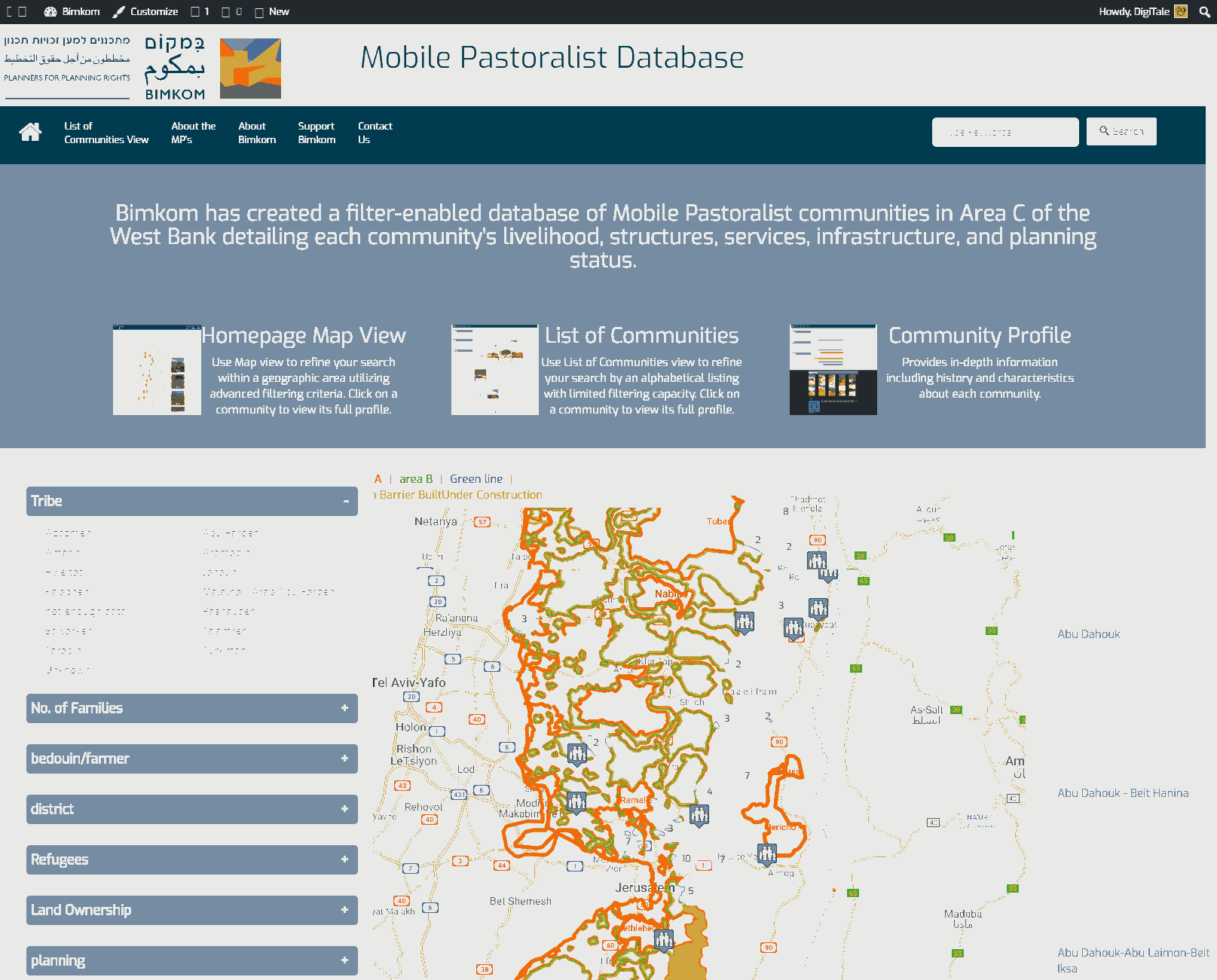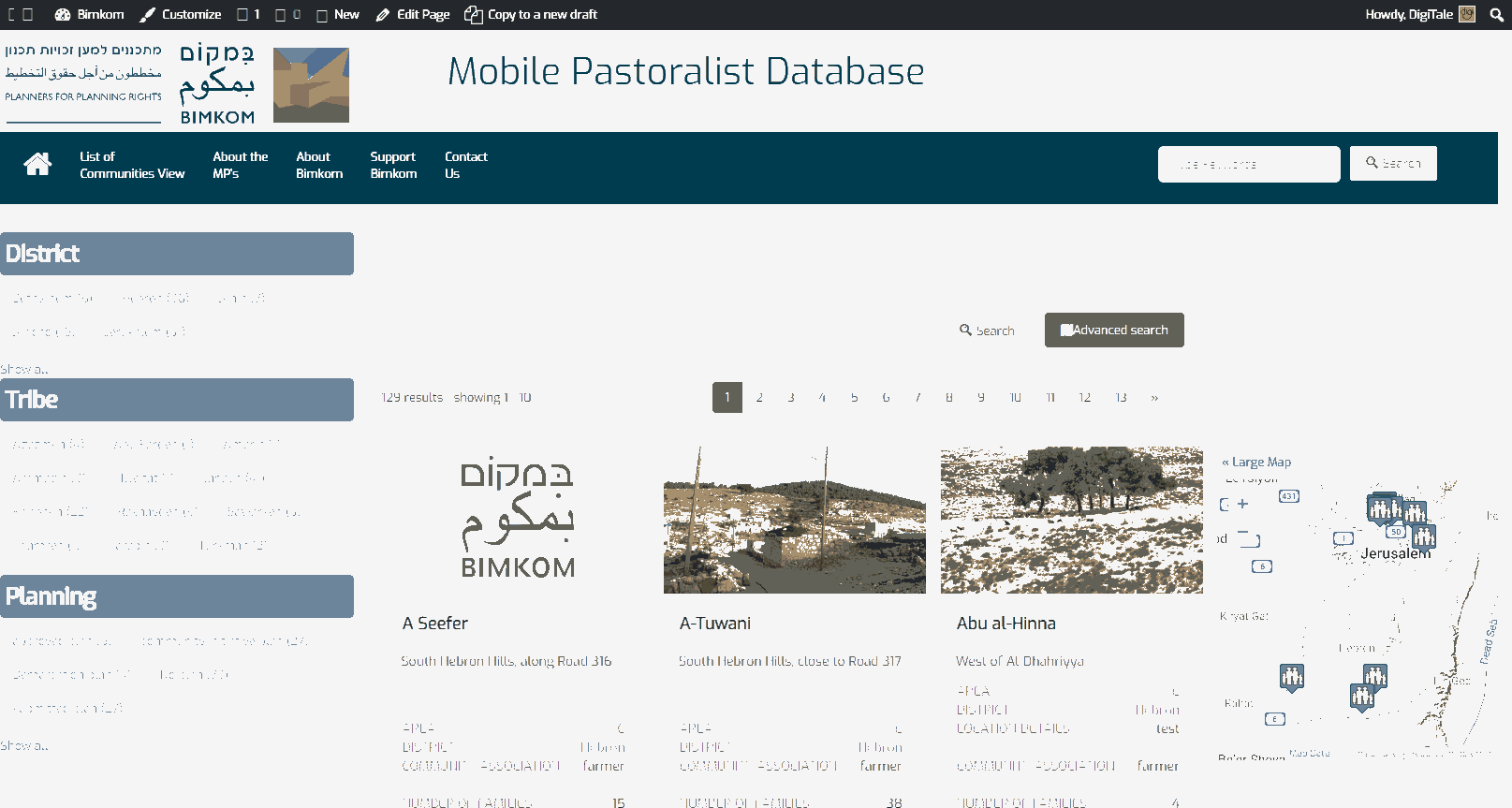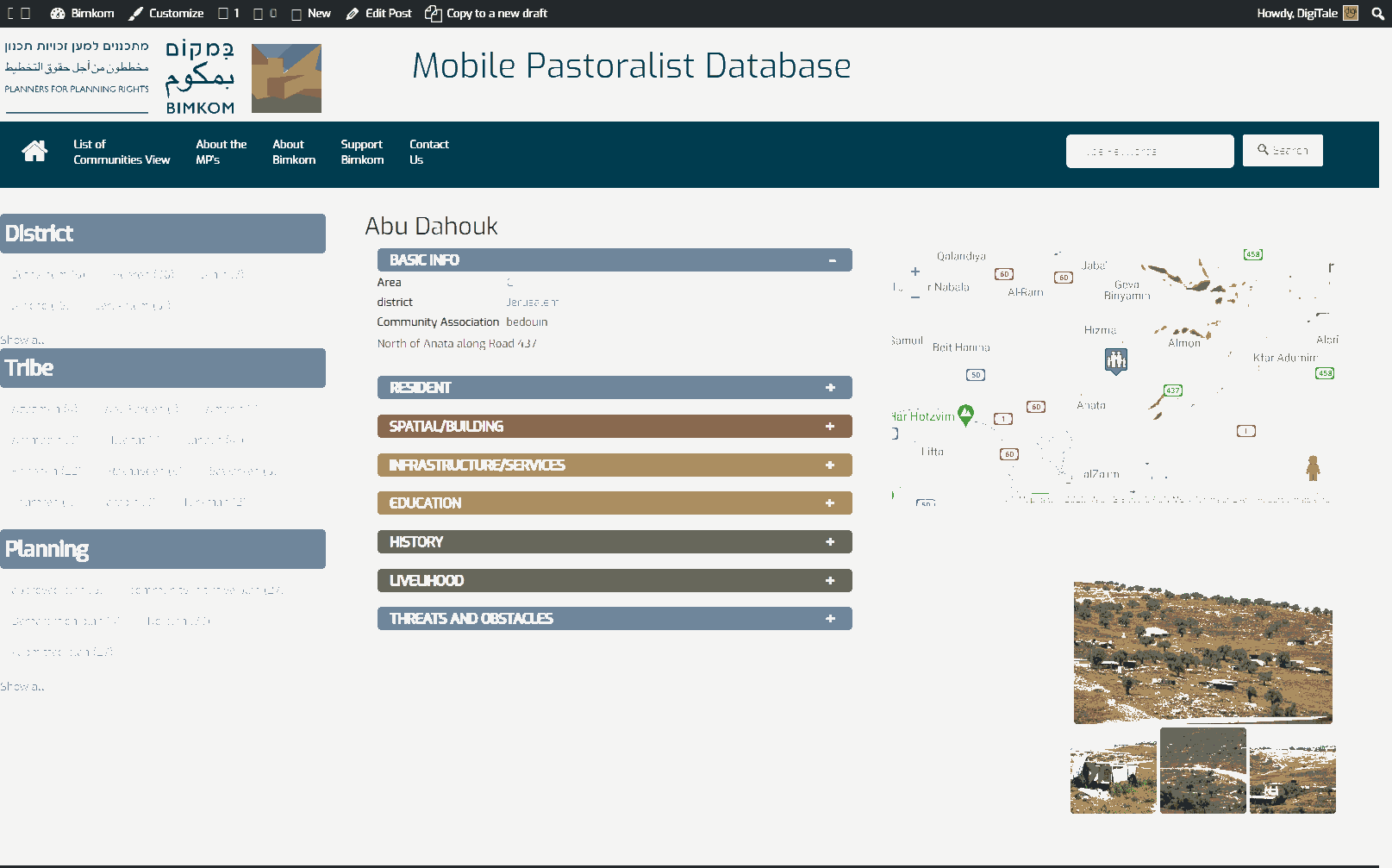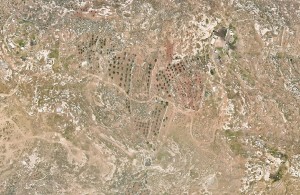Southern West Bank, east of Hebron, north west of Rashaideh
Al Ganoub
Resident
Number of Families
20
Names of Families
Shalaldeh
Farmers Origin/Family
Sa'ir
Refugees
not refugee
Spatial/Building
Land Ownership
private
Land Ownership - details
They are the owners of the land from their ancestors, originally coming from the village Sa'ir.
Planning
Three requests for permits were submitted in 2017
Planning - details
Three requests for permits were submitted in 2017 (1774/82/13, 1774/83/13,
1774/105/13), covering about a third of the orders, but to date, none of them have been deliberated by the responsible planning committee
1774/105/13), covering about a third of the orders, but to date, none of them have been deliberated by the responsible planning committee
Structure Type
tin shack;wood;caves
Infrastructure/Services
Access to Community
pedestrian;4X4 vehicle
Access to Community - details
From main road 356 a paved road leads to the settlement of Metzad (Asfar). A difficult dirt road leads to the village. The eastern section of the road gets increasingly difficult for traveling.
Water Access
water tank;cistern\well
Water Access - details
They have several artesian wells which need to be renovated, but they are afraid to make any changes which may put existing dwelling structures under threat of demolition. These wells are not enough for summer seasons, so they buy water tanks, which cost about 1000 NIS per 23 cubes of water.
Sometimes they find difficulty in bringing those tanks to the village due to attacks of settlers, so drivers refuse to reach their area.
Access to five wells adjacent to the settlement of Metzad-Asfar are blocked by Settlers. Each well had the capacity of 200 cubes.
Sometimes they find difficulty in bringing those tanks to the village due to attacks of settlers, so drivers refuse to reach their area.
Access to five wells adjacent to the settlement of Metzad-Asfar are blocked by Settlers. Each well had the capacity of 200 cubes.
Electric Connection
Electric Connection - details
There is no connection to the electric grid, but a few years ago a solar system was installed. There is a need to connect nine new houses built recently for newly married young couples.
Health Care
Unknown
Location of Services
Sa'ir
Education
Location of School #1
Sa'ir
History
History
A community of herders and farmers who own the lands where they live. They originally come from the nearby village Sa'ir, and they are living in this area for more than 70 years. Some of the elderly men were even born in the village.
In the past, since the Ottoman era, the area was used as their Izbah (seasonal location). In winter and spring with their herds, and in the summer they would return to the adjacent village Sa'ir. This movement has stopped due to the threat of loosing their homes at this location. Today most of them no longer have houses in Sa'ir.
In earlier times they used to live in tents made of wool, some of them lived in caves that are still used today for dwellings in the summer (some of which leak in winter). The caves are used mostly for storing fodder and equipment.
In the past, since the Ottoman era, the area was used as their Izbah (seasonal location). In winter and spring with their herds, and in the summer they would return to the adjacent village Sa'ir. This movement has stopped due to the threat of loosing their homes at this location. Today most of them no longer have houses in Sa'ir.
In earlier times they used to live in tents made of wool, some of them lived in caves that are still used today for dwellings in the summer (some of which leak in winter). The caves are used mostly for storing fodder and equipment.
livelihood
Seasonal Movement
In the past there was seasonal movement.
Seasonal Movement - details
In the past, since the Ottoman era, the area was used as their Izbah (seasonal location). In winter and spring with their herds, and in the summer they would return to the adjacent village Sa'ir. This movement has stopped due to the threat of loosing their homes at this location. Today most of them no longer have houses in Sa'ir.
Other Occupation
shepherding;herd without shepherding;agriculture
Main Occupation
shepherding;herd without shepherding
Woman's Occupation
taking care of the herd;taking care of the kids;housekeeping
General Livelihood - details
In the past they used to have about 10,000 heads of sheep. With the limitation and access to grazing lands, and due to the high costs of the fodder, people found themselves in high debts, and they were forced to sell almost half of the herd in order to pay back loans and debts. The number of herds has decreased to 5,000 heads. Today each family have approximately 250 heads of herd.
Before the limitations they used to take their herds grazing into areas which became the location for outposts and settlements. Recently they can graze only in the nearby lands, around their houses.
Herders find it difficult to afford fodder and seek financial assistance, to help them survive.
Before the limitations they used to take their herds grazing into areas which became the location for outposts and settlements. Recently they can graze only in the nearby lands, around their houses.
Herders find it difficult to afford fodder and seek financial assistance, to help them survive.
Threats and obstacles
Threats and Obstacles
fjfxjsfjsyjsyj
nature reserve;close to settlement;within settlement municipal boundary;settler violence;road
Threats and Obstacles - details
All the structures in the village have been issued demolition/stop work orders.
The nearby settlement Bnei Kedem was established at 1984.
In 1998, two of their own tents were burnt by settlers. A 90 year old blind woman was severely injured.
For more than three years, a settler has been grazing his herd north of the settlement, where they used to take their herd for grazing, and often he threatens them.
Pnei Kedem Farm North, an outpost to the west before entering Al Ganoub, often attacks and threatens the community.
On the eastern side, close to the settlement of Maa'le Amos, the outpost of Ebi Hanachal disturbs the herders from Al Ganoub, as they herd in the area. They often throw burning tires towards the valley where Palestinians bring their herds, threatening them and chasing them away from the area.
A plan for a natural preserve "A Ganoub-Metzad" (# 51/21, submitted in 1993) surrounds the village, from north, east and south. Generally, proposed plans for Israeli interests threaten to restrict herding and the village's development if approved.
Herding has become less financially viable, forcing herders to sell part of their
herds.
Five wells (to the south, adjacent to settlement of Metzad) were over taken by the the occupation., each of them had the capacity of 200 Cubes. so they have lack of water for herds as well as daily use, so they have to buy water . Sometimes they find difficulty in bringing water tanks to the village due to attacks of settlers for the tanks and the drivers, who started refusing to reach their area.
The nearby settlement Bnei Kedem was established at 1984.
In 1998, two of their own tents were burnt by settlers. A 90 year old blind woman was severely injured.
For more than three years, a settler has been grazing his herd north of the settlement, where they used to take their herd for grazing, and often he threatens them.
Pnei Kedem Farm North, an outpost to the west before entering Al Ganoub, often attacks and threatens the community.
On the eastern side, close to the settlement of Maa'le Amos, the outpost of Ebi Hanachal disturbs the herders from Al Ganoub, as they herd in the area. They often throw burning tires towards the valley where Palestinians bring their herds, threatening them and chasing them away from the area.
A plan for a natural preserve "A Ganoub-Metzad" (# 51/21, submitted in 1993) surrounds the village, from north, east and south. Generally, proposed plans for Israeli interests threaten to restrict herding and the village's development if approved.
Herding has become less financially viable, forcing herders to sell part of their
herds.
Five wells (to the south, adjacent to settlement of Metzad) were over taken by the the occupation., each of them had the capacity of 200 Cubes. so they have lack of water for herds as well as daily use, so they have to buy water . Sometimes they find difficulty in bringing water tanks to the village due to attacks of settlers for the tanks and the drivers, who started refusing to reach their area.
Number of Demolition Orders
20
Number of Demolitions
4
Demolitions - details
Previously, the orders had no legal protection, but recently are represented by St. Eve.
The community claimed there were demolitions of 4 structures on November 2016.
The community claimed there were demolitions of 4 structures on November 2016.




